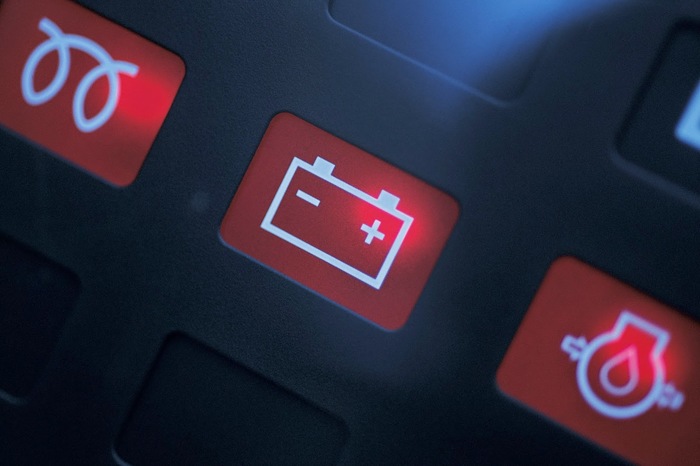Battery Light Is On: Causes and Consequences
A comprehensive guide to understanding why your battery light is illuminated, what it means for your vehicle, and how to address the issue before it leaves you stranded.

Researched by Craig Sandeman. Content based on automotive industry research.
Critical Warning
When the battery light illuminates on your dashboard, it indicates a serious problem with your vehicle's charging system. This is not a minor issue - it means your battery is not being charged and will eventually die, potentially leaving you stranded. Immediate attention is required to prevent further damage and breakdown.
What the Battery Light Actually Means
Contrary to popular belief, the battery light doesn't necessarily mean your battery is bad. It indicates that your vehicle's electrical system is not charging properly. The alternator, which is responsible for charging the battery while the engine runs, is either not working or not providing sufficient power.
Causes of Battery Light Illumination
1. Failing Alternator
The most common cause of battery light issues. The alternator converts mechanical energy from the engine into electrical energy to charge the battery and power electrical systems.
- • Worn-out brushes or bearings
- • Faulty voltage regulator
- • Damaged stator or rotor windings
- • Internal electrical failures
2. Broken or Loose Alternator Belt
The alternator belt (serpentine belt) drives the alternator. If it breaks, slips, or becomes loose, the alternator cannot spin and generate electricity.
- • Belt wear and tear over time
- • Improper tension
- • Oil or coolant contamination
- • Damaged belt pulleys
3. Electrical System Issues
Problems in the electrical wiring or connections can prevent proper charging.
- • Corroded or loose battery terminals
- • Damaged wiring between alternator and battery
- • Faulty ground connections
- • Blown fuses in the charging circuit
4. Dead or Failing Battery
While less common, a completely dead battery can cause the light to stay on, especially if it cannot accept a charge.
- • Battery age (typically 3-5 years)
- • Extreme temperature exposure
- • Deep discharge cycles
- • Internal cell failure
Warning Signs & Symptoms
Primary Warning Signs
Electrical System Issues:
- • Dimming headlights
- • Flickering dashboard lights
- • Slow power window operation
- • Weak horn sound
- • Radio cutting out
Performance Problems:
- • Engine stalling
- • Difficulty starting
- • Rough idle
- • Loss of power steering
- • ABS warning lights
Progressive Symptoms
The symptoms typically worsen as the battery discharges:
- Stage 1: Battery light appears, slight dimming of lights
- Stage 2: Noticeable dimming, electrical accessories slow down
- Stage 3: Engine misfires, dashboard warnings appear
- Stage 4: Engine stalls, vehicle becomes inoperable
Diagnosis Steps
Professional Diagnosis Recommended
While you can perform basic checks, a professional diagnosis is recommended for accurate results and to prevent further damage.
Step 1: Visual Inspection
- • Check battery terminals for corrosion or looseness
- • Inspect alternator belt for wear, cracks, or looseness
- • Look for damaged or disconnected wiring
- • Check for oil or coolant leaks near the alternator
Step 2: Voltage Testing
Battery Voltage (Engine Off):
- • 12.6V or higher: Good
- • 12.0-12.5V: Low charge
- • Below 12.0V: Dead or failing
Charging Voltage (Engine Running):
- • 13.5-14.5V: Normal
- • Below 13.0V: Alternator problem
- • Above 15.0V: Voltage regulator issue
Consequences of Ignoring the Battery Light
Immediate Risks
- • Vehicle breakdown: Engine will eventually stall and won't restart
- • Safety hazards: Loss of power steering, brakes, and lights
- • Stranded: You may be left in an unsafe location
- • Additional damage: Electrical components may be damaged
Long-term Consequences
- • Battery damage: Deep discharge can permanently damage the battery
- • Electrical system damage: Voltage spikes can harm sensitive electronics
- • Increased repair costs: What could be a simple fix becomes expensive
- • Reduced vehicle reliability: Ongoing electrical issues
Solutions & Repairs
Battery Replacement
If the battery is the issue, replacement is straightforward and relatively inexpensive.
- • Cost: $100-300 depending on quality and warranty
- • Installation: 30-60 minutes
- • Warranty: 3-5 years typical
- • DIY friendly with proper tools
Alternator Repair/Replacement
The most common solution, as alternators are the primary cause of battery light issues.
- • Cost: $300-800 (VW parts may be more expensive)
- • Labor: 1-3 hours
- • Options: Rebuild existing or replace with new/remanned
- • Professional installation recommended
Belt Replacement
If the alternator belt is worn or broken, replacement is necessary.
- • Cost: $50-150 including labor
- • Time: 30-60 minutes
- • DIY possible with proper tools
- • Check tension after installation
Prevention Tips
Regular Maintenance
Battery Care:
- • Test battery annually
- • Clean terminals regularly
- • Check for corrosion
- • Replace every 3-5 years
Alternator Care:
- • Inspect belt condition
- • Check belt tension
- • Test charging system
- • Listen for unusual noises
Best Practices
- • Avoid short trips: Give the alternator time to charge the battery
- • Don't leave accessories on: Turn off lights, radio, and chargers when parked
- • Use quality parts: Invest in good batteries and alternators
- • Address issues promptly: Don't ignore warning lights
- • Keep records: Document maintenance and repairs
Frequently Asked Questions
What does the battery light on my dashboard mean?
The battery light indicates that your vehicle's electrical system is not charging properly. This usually means the alternator is not providing enough power to charge the battery, which can lead to battery failure and vehicle breakdown.
Can I drive with the battery light on?
You can drive for a short distance to get to a safe location or repair shop, but you should stop driving as soon as possible. The battery will eventually die, leaving you stranded. Your headlights will dim, electrical systems will fail, and the engine may stall.
How do I know if it's the battery or alternator?
If the battery light comes on while driving, it's usually the alternator. If the car won't start but the battery light is off, it's likely the battery. A voltage test can confirm - a healthy battery should read 12.6V when off, and 13.5-14.5V when running.
What causes the battery light to come on?
Common causes include a failing alternator, loose or corroded battery terminals, broken alternator belt, faulty voltage regulator, damaged wiring, or a completely dead battery. The alternator is the most common culprit.
How much does it cost to fix a battery light issue?
Costs vary: battery replacement ($100-300), alternator replacement ($300-800), belt replacement ($50-150), or voltage regulator ($100-200). VW parts may be more expensive. Always get a proper diagnosis first to avoid unnecessary repairs.
How can I prevent battery light issues?
Regular maintenance includes checking battery terminals for corrosion, ensuring the alternator belt is in good condition, testing the battery annually, avoiding leaving lights on, and having the charging system checked during routine service.

Written by Craig Sandeman
Automotive expert with over 15 years of experience in vehicle diagnostics, repair, and parts supply. Specializing in Volkswagen vehicles and electrical systems.
Connect on LinkedIn